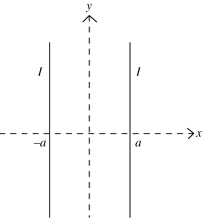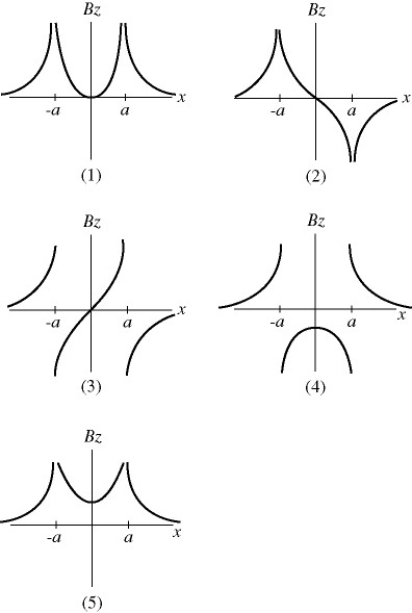Two very long parallel wires in the xy-plane, a distance 2a apart, are parallel to the y-axis and carry equal currents I as shown in the figure. The +z direction points perpendicular to the xy-plane in a right-handed coordinate system. If both currents flow in the +y direction, which one of the graphs shown in the figure below best represents the z component of the net magnetic field, in the xy-plane, as a function of x? (Caution: These graphs are not magnetic field lines.) 

Definitions:
Chattels
Personal property or movable possessions, as opposed to real property which includes land and buildings.
Intangible Property
Assets that do not have a physical presence yet hold value, such as intellectual property, copyrights, patents, and trademarks.
Chose in Action
A personal right to property which can only be claimed or enforced through legal action, not by taking physical possession.
Intellectual Property
Refers to creations of the mind, such as inventions; literary and artistic works; designs; and symbols, names, and images used in commerce.
Q1: In the two-slit experiment, monochromatic light of
Q2: The distance between the object and the
Q4: On a hot summer day, the temperature
Q14: Three capacitors, of capacitance 5.00 μF, 10.0
Q17: A solenoid with 400 turns has a
Q17: Three point charges are placed on the
Q26: A platinum wire is used to determine
Q27: A parallel-plate capacitor, with air between the
Q29: A compound lens is made by joining
Q29: A conducting bar slides without friction on